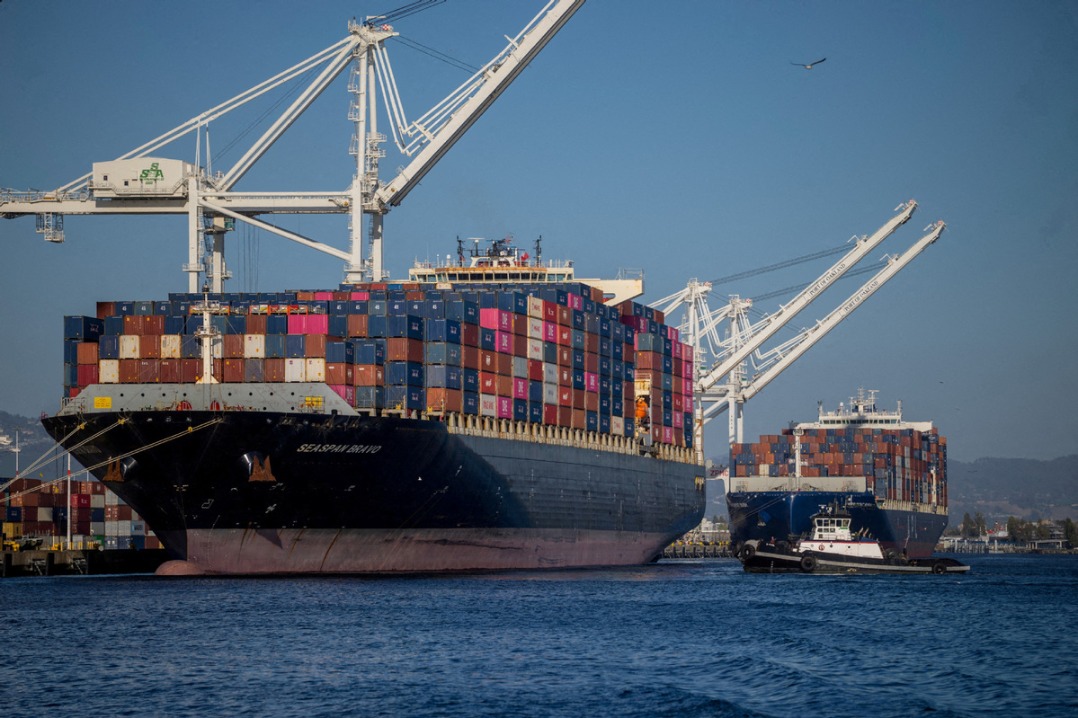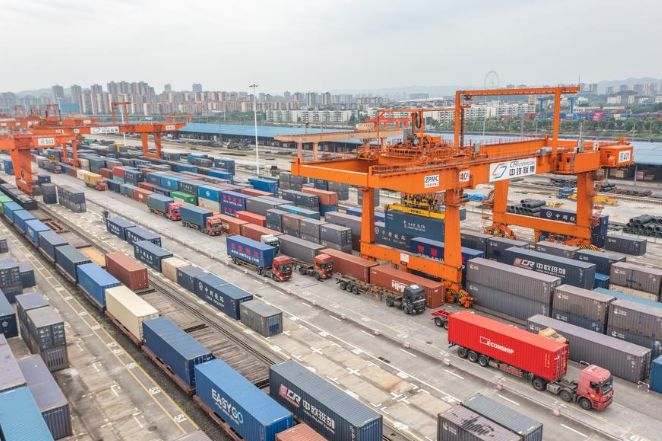Country's resilience can help global recovery, too


Amid these challenging times, China's 14th Five-Year Plan (2021-25) will be very relevant not only to the country's development, but also to global economic recovery.
While the US and major European economies struggle with a resurging spread of COVID-19, China's success in bringing the pandemic under basic control provides hope. The new five-year plan seems to stimulate growth at the right time.
The plan outlines the governance system and reforms of the country in the years ahead. It defines targets that are likely to contribute significantly to post-pandemic prosperity in the country, with the benefits flowing across borders.
China's simultaneous development of its domestic and foreign markets-with the domestic market as the mainstay and the domestic and foreign markets supporting each other-can speed up mutual welfare with trade partners. This "dual circulation" development strategy will favor openness while reducing trade barriers, and will complement the domestic growth cycle.
Consequently, economic exchanges will continue to scale up foreign investment as well as imports from other economies all over the world, which was well showcased at the weeklong third China International Import Expo, held recently in Shanghai.
The proposal also reiterates the role of markets in effective resource allocation. A greater focus on enhancing quality and efficiency will help consolidate China's share of global exports.
The country's innovation-aided trade development and projects in countries engaged in the Belt and Road Initiative are expected to strengthen global economic balance and governance.
The proposed plan spotlights innovation and self-reliance on technology as building blocks of national development. This will help in mitigating the impact of technology export control policies imposed by the United States.
China's continuous focus on poverty alleviation will be the fundamental driver of sustainable development. Closing the gap between urban and rural areas remains the country's top priority to limit earnings disparity.
Throughout the year, China has made many proactive policy interventions to preserve growth and employment in response to COVID-19. These include sizeable fiscal spending, tax credits, cash incentives to stimulate spending, trimming lending rates and easing reserve requirements.
Consequently, there has been a resurgence of industrial activities, which helped the Chinese economy rebound from the COVID-19 slump and post robust GDP growth of 4.9 percent year-on-year in the third quarter. Although growth of the world's second-largest economy is slower than expected, it has accelerated significantly compared with second-quarter expansion of 3.2 percent.
This recovery is also meritorious, considering the 6.8 percent contraction in China's GDP during the peak of the pandemic in the first quarter due to the nationwide closure of factories and manufacturing units. Key performance drivers include the curtailment of the deadly virus, followed by an increase of 5.8 percent in industrial output and a 0.9 percent rise in retail sales.
Consumer spending has been at the maximum level in the current year. On the monetary front, credit growth peaked with an increase in government bond yields and momentum for Chinese stocks.
Amid the global economic rout, a revival in financial market confidence will help attract foreign portfolio investment. It will also offer worldwide portfolio managers the opportunity to diversify and book sizeable returns during the pandemic.
Despite the trade standoff between the US and China, a recent survey found that only 4 percent of US companies were relocating their production facilities out of the Chinese mainland.
While China seems to be the only major economy to record positive growth this year, its success will revitalize global stability. The scale of the Chinese economy and its resilience in the global value chain can contribute to worldwide recovery.
This is evident from the fact that the Chinese share of global GDP has tripled compared with 2019. Across multiple industries, China is the main or sometimes only source of input, and it contributes about one-eighth of worldwide exports to the major economic regions. This dependency reflects China's systematic importance for a global economic rebound.
Further, providing debt-relief programs for low-income countries is vital to limit economic contraction. The aggressive financing of global infrastructure and investment through the Belt and Road Initiative is an excellent recovery stimulus.
Similarly, China's resolve to combat climate change and its collaboration for an accessible vaccine are long-term economic catalysts. Owing to China's domestic demand for copper, oil and agricultural products, the prices of commodities and capital goods have rebounded, having a positive impact on the Asian and European economies.
The author is an associate professor of finance at Excelia Business School in La Rochelle, France.
































